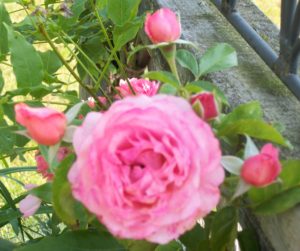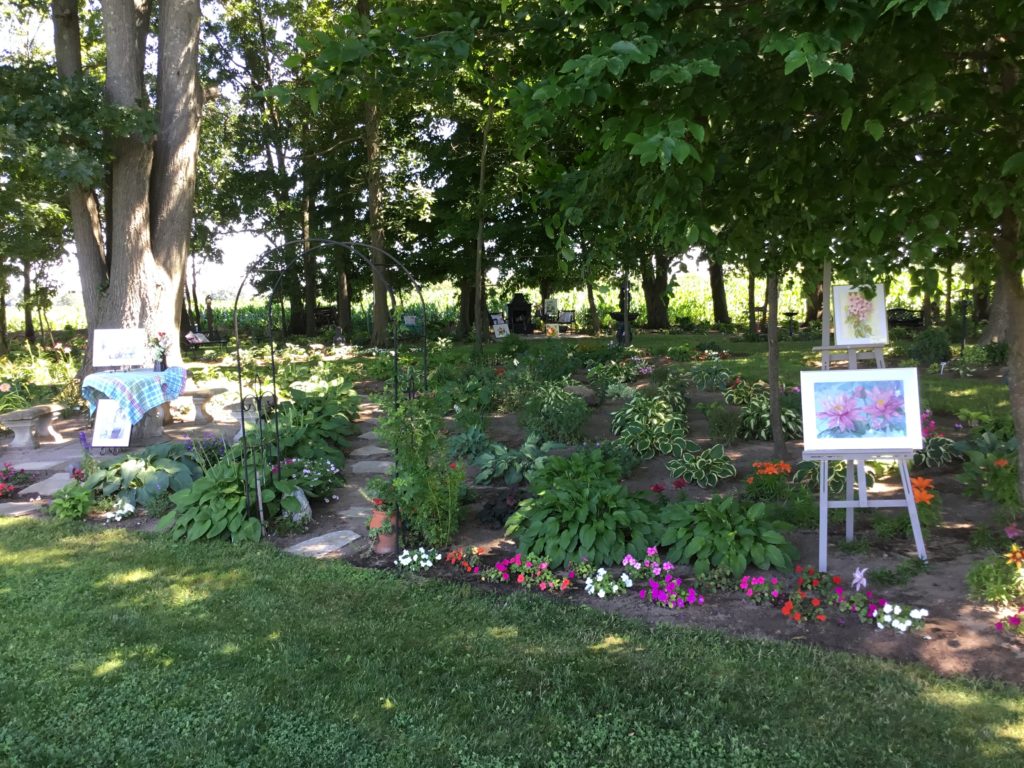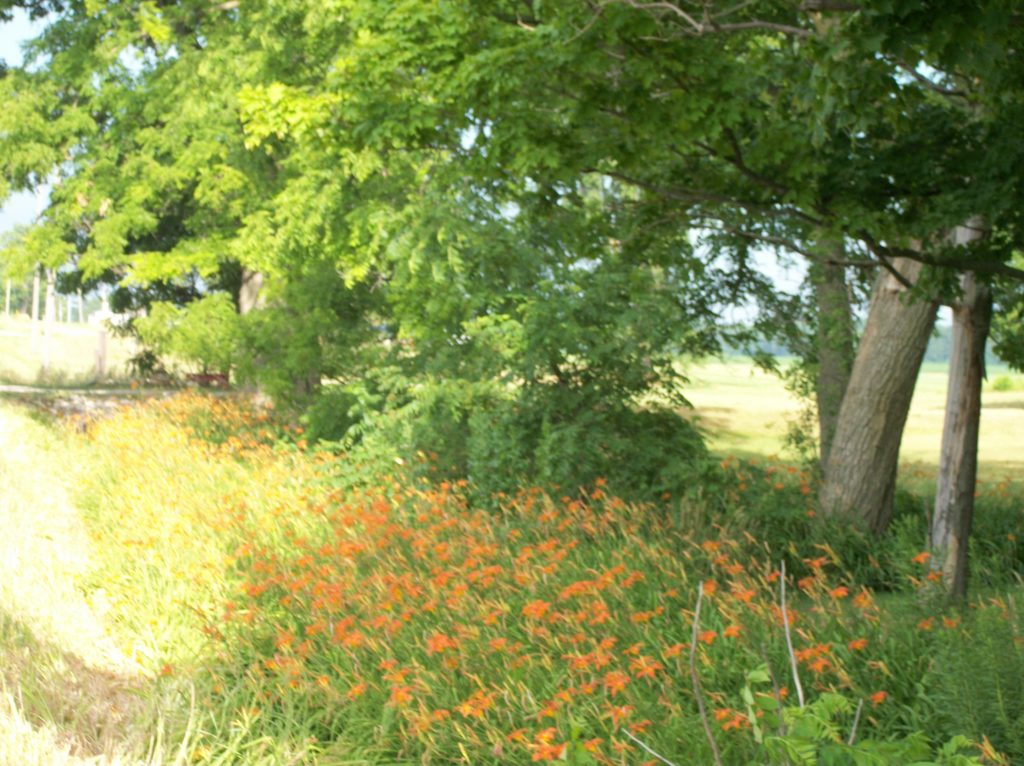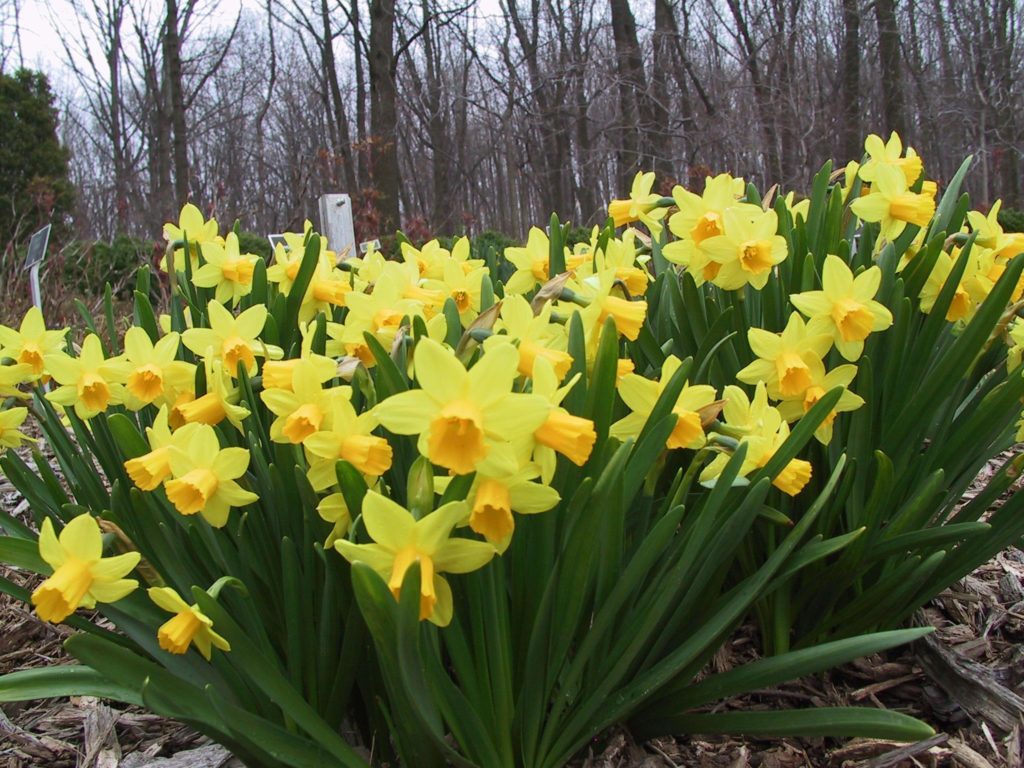It’s Still Just Dirt, The Tillsonburg News – June 2019
by Angela Lassam
 Roses deserve another chance in our gardens. In the past roses have been a huge challenge but there is a new idea to enable us to help them thrive. They did not seem to survive the cold winters although many ways have been tried. If they came through the winter they soon became pest infested or diseased.
Roses deserve another chance in our gardens. In the past roses have been a huge challenge but there is a new idea to enable us to help them thrive. They did not seem to survive the cold winters although many ways have been tried. If they came through the winter they soon became pest infested or diseased.
With the new era of no insecticides and other chemical treatments new ideas have proven helpful to the average gardener and this can be seen at the new rose garden in the Royal Botanical Gardens in Hamilton. It has shown that companion planting is beneficial. Plants that have a strong smell keep many insects away. The allium family, Cranesbill (perennial geranium) and Lavender which comes in various colors is a good choice. Many herbs have strong smells and their flowers are very decorative. Chives has a purple flower. Parsley has decorative leaves and various mints can be allowed to go to seed creating a flower. Oregano and some thymes are a good ground cover. Annuals will not compete with the roses so try geraniums, marigolds, alyssum, million bells and pansies.
There is some interesting reading on www.gardenia.net/guide/Underplanting-Roses.
In the past mulch has been used around the roses and consequently has harboured mold which has created fungal disease. Use companion plants instead. Never water your roses on the leaves but water the soil around them. Blackspot fungus overwinters in fallen leaves and stem cankers so pruning affected canes and removing old dead leaves is a good idea.
The roses to purchase should be the older heirloom species with names that include Alba, Gallica, Centifolia and Damask. Roses grown from the Rosa Rugosa species are the most disease resistant. There is a series of roses under the group of Canadian Shield – one is called Explorer which was introduced for Canada 150 and is deep red and this year there is Chinook Sunrise which is a pale pink with orange edging. These were introduced for the more severe cold winters and rated Zone 3.
You need to decide where is the best spot in your garden for a bed. It is best positioned where it will get morning sun to dry the rose leaves and afternoon shade to prolong the blooms. Next is purchasing them. There are two types available – bare root and container. Bare root roses are packed in moist material and the canes are waxed. There is no need to remove the wax as it will naturally drop off. They need to be soaked in a bucket of water for 8-12 hours to rehydrate the roots. These are usually through mail order. In local nurseries container roses can be found but do your homework and read labels for zone as many roses are for Zone 5.
Planting is different for roses. For bare root roses dig the hole big enough to take the roots spread well and as deep as the bud union (where it has been grafted). Add bone meal then place the rose in and fill with soil about 2/3, add water making a slurry. DO NOT tamp down, wait for water to drain. Repeat this process to ground level. After settling the bud union will be 1-2 inches below ground level. This is where it should be for winter protection. Place a temporary mound of soil around the base to encourage maximum bud break. Gently wash it away after 2-3 weeks or when new growth looks good.
Container or potted roses can be planted any time but later ones may have the roots tangled and filling the pot. In this case loosen the roots, open up the ball and trim the roots if necessary. Then plant the same as the bare root method.
Roses have been in gardens all over the world, some dating back to the 17th Century when they were introduced from Asia to Europe. I hope you will give them another chance.
The Tillsonburg Horticultural Society with Station Arts Centre has a tour of gardens, Beyond the Garden Gate, planned for Saturday June 22nd 11 a.m. to 4 p.m. Tickets available @ 519 842 6151 are $10 in advance or $12 on the day at any signed garden. It will be an event with something for everyone with local artisans, art, and music throughout the tour of some amazing local gardens.
Regular monthly meetings resume Tuesday, September 3rd @ 7:30 p.m. in the Senior Centre Auditorium, Tillsonburg Community Centre.



